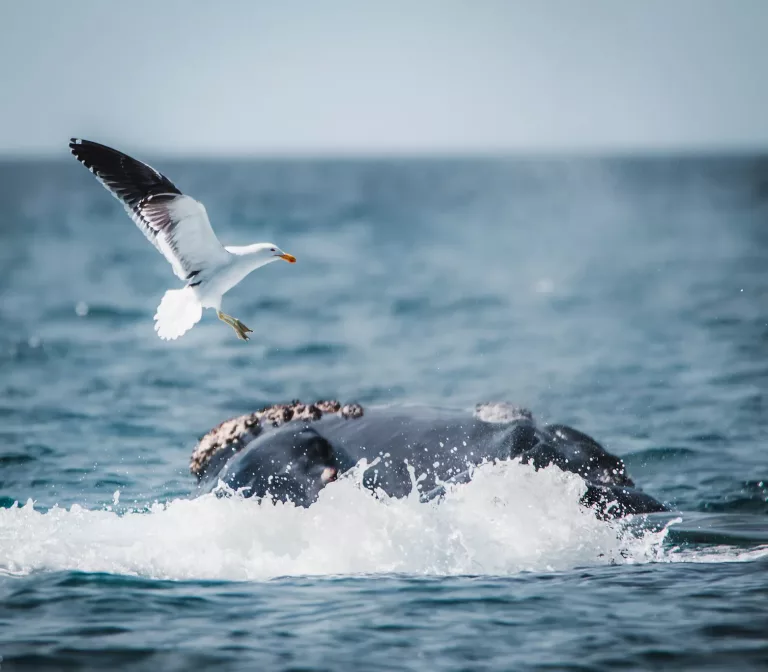Unveil the mysteries within the silence
Patagonia (ARG – CHI)
Patagonia and it’s amazing landscapes
Amazing landscapes full of glaciers and rock mountains are characteristic of this southern part of the world. Foreigners say local people make them feel at home. The silence with its flora and fauna will surprise you like a secret of nature.
The name Patagonia comes from the indigenous tribes that inhabited the area, the Patagonians, who wore shoes made of animal skins that left large footprints. As a result, they were given the name “Patagones,” which means “big feet.” Unfortunately, much of this culture was wiped out due to the savage colonization.
Patagonia is currently known as the entire southern cone of the South American continent, which is shared by Chile and Argentina
The border between Chile and Argentina is located at the highest point of the Andes Mountains, leaving Argentina on the eastern side, with a large expanse of steppe, and the Chilean side on the western side, with a thin strip of land very close to the Pacific Ocean, which gives jungle characteristics, Because is a very large area with different latitudes, it can be divided into Northern Patagonia and Southern Patagonia.
Contact us
Let’s plan toghether your next trip
South Patagonia (CHI)
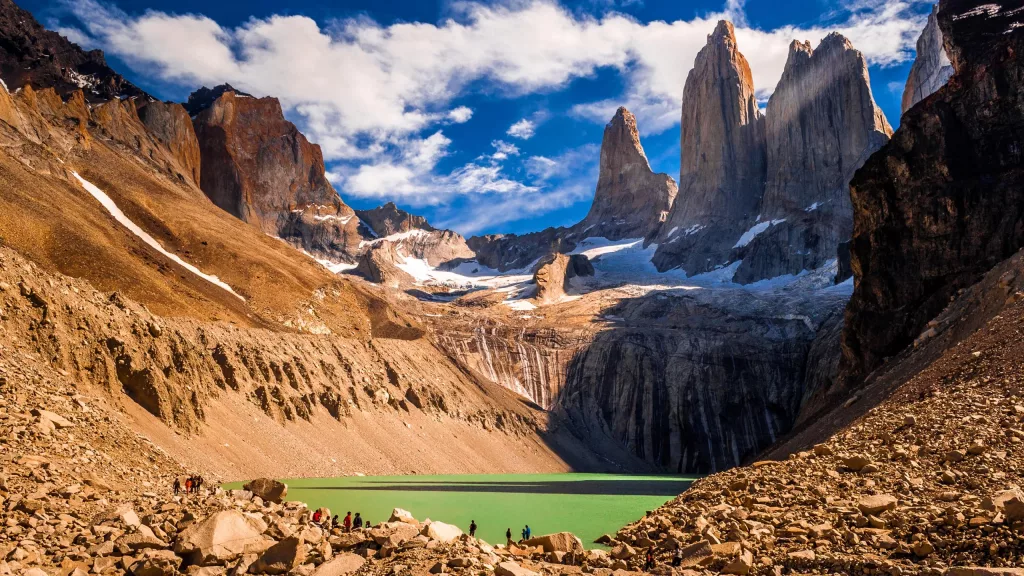
What to visit?
Punta Arenas
Punta Arenas is a city located in the southern part of Chile, specifically in the region of Magallanes and Chilean Antarctica. It is the largest city in Chilean Patagonia and serves as the regional capital.
Punta Arenas is situated on the Brunswick Peninsula, near the southern tip of South America. It is strategically located along the Strait of Magellan, which connects the Atlantic and Pacific Oceans. The city has a rich history, dating back to the 19th century when it was a hub for shipping, trade, and exploration in the region. It played a significant role in the development of Chilean Patagonia. Punta Arenas has a unique cultural blend due to its history of European immigration, primarily from Croatia and Spain. Visitors can explore the city’s historic architecture, museums, and cultural events. It’s also a gateway for tourists heading to places like Torres del Paine National Park and Tierra del Fuego. Despite being an urban area, Punta Arenas is close to areas where you can observe wildlife. Penguins, seals, and seabird colonies are accessible from the city, making it a starting point for wildlife tours in the region.
The city is well-connected by air, with Presidente Carlos Ibáñez del Campo Airport serving as the main gateway to the region. It also has a network of roads that connect it to other parts of Chilean Patagonia.
Puerto Natales
Puerto Natales is a charming city located in the southern part of Chilean Patagonia. It is the capital of the Última Esperanza Province in the Magallanes and Chilean Antarctica Region. Puerto Natales is known for its stunning natural surroundings, making it a popular gateway for travelers visiting the nearby Torres del Paine National Park and the broader Patagonian region.
Puerto Natales is often considered the gateway to Torres del Paine National Park, one of the most renowned natural attractions in Chilean Patagonia. The city serves as a base for visitors exploring the park’s hiking trails, lakes, glaciers, and iconic rock formations, such as the Torres del Paine themselves.
The city is situated along the Última Esperanza Sound, providing stunning waterfront views and a picturesque backdrop of snow-capped mountains and fjords. The scenery is particularly breathtaking during sunrise and sunset.
Puerto Natales is an outdoor enthusiast’s paradise, offering activities such as trekking, hiking, horseback riding, kayaking, and birdwatching. Many tour operators in the city offer guided excursions into the surrounding wilderness.
Despite its small size, Puerto Natales has a vibrant cultural scene. Visitors can explore local crafts and art at the city’s markets, attend cultural events, and enjoy traditional Chilean cuisine in its restaurants and cafes.
Seafood is a highlight of the local cuisine, with dishes like king crab and Magellanic lamb being popular options. Visitors can savor Patagonian flavors in the city’s restaurants and try traditional Chilean wines.
Puerto Natales is committed to sustainable tourism practices, with efforts to protect the environment and minimize the impact of tourism on the delicate ecosystems of the region.
It can be reached by bus from Punta Arenas or with direct flights from Santiago. It also connects by bus to the city of El Calafate (Argentina).
Torres del Paine National Park
Considered the eighth wonder of the world, Torres del Paine National Park is one of Chile’s most iconic and renowned natural attractions, located in the southern part of the country in the region of Magallanes and Chilean Antarctica. The park is known for its stunning and diverse landscapes, including towering granite peaks, pristine lakes, glaciers, lush forests, and abundant wildlife.
The park is named after the three distinct granite peaks known as the Torres del Paine, which are among the most recognizable features. The highest peak, Torre Central, reaches approximately 2,500 meters (8,202 feet).
Torres del Paine is home to several glaciers, including Grey Glacier, which is one of the park’s main attractions. Visitors can take boat tours to get close to the glacier and even hike on it.
The park is dotted with beautiful lakes, such as Lake Nordenskjöld, Lake Pehoé, and Lake Sarmiento, offering picturesque reflections of the surrounding mountains.
Torres del Paine is a hiker’s paradise, with numerous trails of varying difficulty levels. The most famous trek is the “W Circuit,” a multi-day hike that takes you through some of the park’s most stunning landscapes.
The park is home to a diverse range of wildlife, including guanacos (a type of wild llama), foxes, pumas, huemul deer, and numerous bird species. Birdwatching is particularly rewarding in the park.
The park’s ecosystems feature a variety of plant species, including the native lenga and Coihue forests, colorful wildflowers, and hardy grasses that have adapted to the harsh Patagonian climate.
The park offers a range of accommodations, from campsites for trekkers to comfortable lodges for those looking for more amenities. Reservations are recommended, especially during the peak summer season.
The park’s dramatic landscapes and changing weather conditions make it a paradise for photographers, with opportunities for capturing breathtaking shots at every turn.
Torres del Paine is a UNESCO Biosphere Reserve and is carefully managed to protect its natural beauty and ecosystems. Visitors are encouraged to follow Leave No Trace principles and respect park regulations.
The park has a visitor center with exhibits and information about the park’s geology, flora, and fauna. It’s a great place to start your visit and gain insight into the park’s natural history.
North Patagonia (CHI)
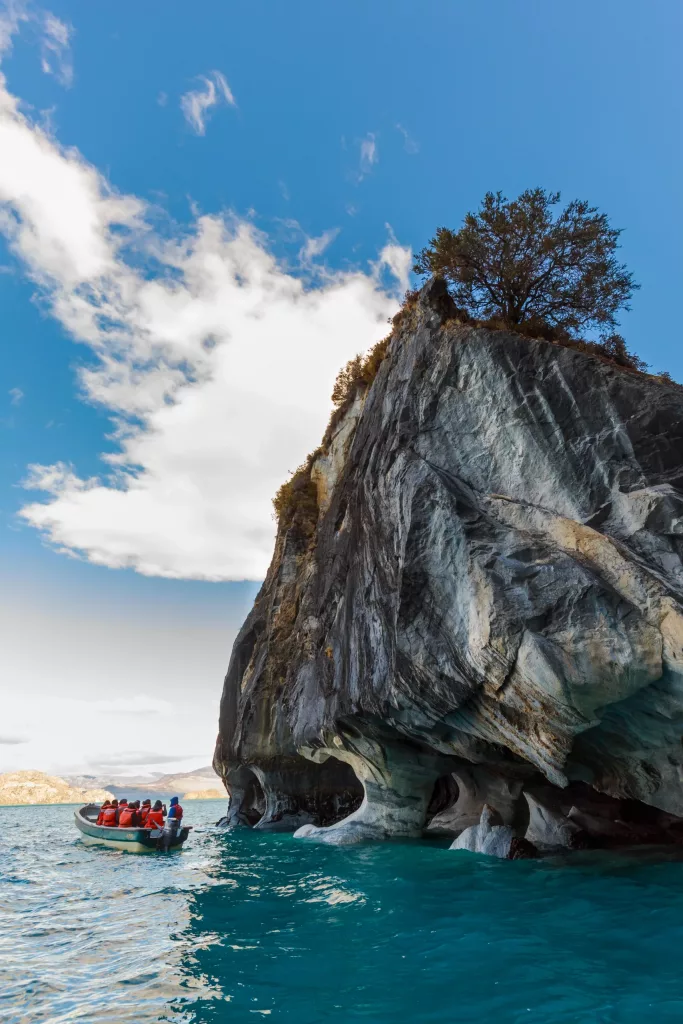
The northern part of Chilean Patagonia refers to the region in the northernmost areas of the traditional Patagonian territory in Chile. Chilean Patagonia is known for its stunning natural landscapes, including fjords, glaciers, mountains, and pristine wilderness.
Composed by the Valdivian rainforest, also known as the cold rainforest because of its humidity and rich biodiversity. It is possible to find volcanoes (hot springs), glaciers, dolphins, and rainforest in the same landscape. To the south, we can find more steppe landscapes with a large presence of glaciers, lakes, and wild animals.
This part of Chilean Patagonia is less frequented by tourists compared to the more southern regions, making it an excellent destination for those seeking unspoiled natural beauty and outdoor adventures. It’s a region characterized by its remote and wild landscapes, making it a paradise for nature enthusiasts, hikers, and those looking to explore the pristine wilderness of Patagonia.
What to visit?
Southern Highway
The Southern Highway (Carretera Austral) in Chile is one of the most famous and scenic routes in the country, offering travelers breathtaking views of Patagonian landscapes. It stretches for approximately 1,240 kilometers (770 miles) through the southern regions of Chile, including Los Lagos and Aysén, and provides access to remote areas and national parks.
The Carretera Austral passes through some of the most beautiful and remote landscapes in Chile. Travelers can expect to see lush forests, snow-capped mountains, glaciers, fjords, rivers, and pristine lakes along the route.
The highway provides access to numerous outdoor activities, such as trekking, kayaking, fishing, and camping. There are many opportunities to explore the natural beauty of the region.
This road takes you deep into the heart of Chilean Patagonia, offering a chance to experience the remote and wild environment of the region. It’s a paradise for nature enthusiasts and adventurers.
Along the Carretera Austral, you’ll find several national parks and nature reserves, including Queulat National Park, Patagonia Park, Cerro Castillo National Park, and more. These protected areas are great for hiking and wildlife viewing.
The towns and communities along the highway offer a glimpse into the local culture of the region. You can experience traditional Chilean Patagonian life and hospitality.
The Carretera Austral is not a fully paved highway, and some sections may be gravel or dirt roads. Travelers should be prepared for the challenging road conditions, especially in remote areas.
To navigate the numerous fjords and rivers, travelers often need to take ferries, which can be an adventure in itself. These ferries provide a unique way to explore the region.
The Carretera Austral is a fantastic destination for those seeking an authentic Patagonian adventure and a deep connection with nature. It is best explored during the summer months, from November to March, when the weather is more favorable and many outdoor activities are available. Travelers should plan carefully, bring essential supplies, and check the status of the road conditions before embarking on their journey.
Puerto Varas:
Puerto Varas is a picturesque city located in the Los Lagos Region of southern Chile. It is often referred to as the “City of Roses” due to its beautiful gardens and the numerous roses that adorn its streets.
Puerto Varas is situated on the eastern shore of Lake Llanquihue, the second-largest lake in Chile. The city is surrounded by stunning natural beauty, including the Osorno and Calbuco volcanoes, making it a popular destination for travelers seeking outdoor adventures and breathtaking views.
The city’s architecture and culture bear the influence of the early German settlers who arrived in the region during the 19th century. Many of the houses and buildings in Puerto Varas reflect this German heritage.
The city offers a picturesque waterfront promenade along Lake Llanquihue, where you can take leisurely walks and enjoy panoramic views of the lake and volcanoes. It’s a great place to relax and soak in the scenery.
Located nearby, the Vicente Pérez Rosales National Park is Chile’s oldest one and boasts natural wonders like the Petrohué Waterfalls and Todos los Santos Lake. It’s a fantastic place for hiking, wildlife viewing, and exploring the outdoors.
Puerto Varas is a hub for outdoor activities, such as hiking, mountain biking, kayaking, fishing, and even paragliding. The region’s natural beauty makes it an excellent destination for nature enthusiasts and adventure seekers.
Puerto Montt
Puerto Montt is a city in southern Chile, situated in the Los Lagos Region. It is the regional capital and one of the major urban centers in southern Chile.
With its airport as the main gateway to both Northern Patagonia and the Los Lagos and Volcanoes district. There are daily connections to Santiago and Punta Arenas. From here, it is possible to visit Chiloé Island, and start down the Carretera Austral. It is also the embarkation point for ferries and cruises that visit Patagonia.
Puerto Montt is the administrative and economic center of the Los Lagos Region, serving as a hub for government, commerce, and transportation in the area.
The city’s port is one of the busiest in Chile and plays a significant role in the country’s fishing and seafood industry. Visitors can observe the bustling activity in the port, and seafood lovers can enjoy fresh catches at the local markets and restaurants.
Angelmó is a well-known market in Puerto Montt where you can sample a variety of fresh seafood dishes and local cuisine. It’s a great place to experience Chilean culinary culture.
Puerto Montt is home to several beautiful churches, including the Cathedral of Puerto Montt, which features striking architecture.
Puerto Montt serves as a gateway for travelers heading to the nearby Chiloé Archipelago, known for its distinctive wooden churches, folklore, and unique culture. Ferries from Puerto Montt take passengers to the islands.
Puerto Montt is a city with a mix of commerce and culture, offering a unique blend of coastal life, regional cuisine, and access to the natural beauty of southern Chile. It’s a place where you can experience the hustle and bustle of a regional capital while being close to the serene landscapes and cultural treasures of the surrounding region.
Chiloé Island
Chiloé Island (Isla de Chiloé) is the largest island in the Chiloé Archipelago, located off the west coast of southern Chile. It is known for its distinct culture, beautiful landscapes, and unique architecture.
Chiloé Island has a rich cultural heritage that is deeply rooted in its indigenous Mapuche and Huilliche peoples, as well as Spanish and Chono influences. The island is known for its folklore, mythology, and unique traditions, including the famous Chilote mythology and legends.
Chiloé is renowned for its iconic wooden churches, many of which are UNESCO World Heritage Sites. These churches, built by the Jesuits and later by the local population, are known for their distinct architectural style and craftsmanship.
The island is famous for its palafitos, colorful houses built on stilts along the waterfront in towns like Castro. These traditional Chilote homes are a distinctive and picturesque feature of the island.
Chiloé Island is characterized by its lush, green landscapes, rolling hills, and forests. It’s a haven for nature enthusiasts, offering opportunities for birdwatching, hiking, and exploring the unique ecosystems of the region.
The island’s coastline features numerous inlets, fjords, and bays. It is an ideal location for boat tours, fishing, and marine wildlife observation, including penguins, dolphins, and sea lions.
Chilote cuisine is famous for its seafood, particularly “curanto”, a traditional dish prepared with shellfish, potatoes, sausage, and meat, cooked in a pit with heated stones. Seafood lovers will find plenty to savor on the island.
The island hosts various cultural festivals and events throughout the year, celebrating its rich traditions and heritage. One of the most famous is the Festival Costumbrista de Dalcahue.
Chiloé Island and the surrounding archipelago offer excellent opportunities for eco-tourism, with pristine natural areas, wetlands, and forests that attract nature lovers and conservationists.
Coihaique
Coihaique is a city located in the Aysén Region of Chile. It is the regional capital and the largest city in Aysén.
Coyhaique is surrounded by some of the most stunning natural landscapes in Chile. The region is known for its pristine rivers, lush forests, fjords, and snow-capped mountains. It’s a paradise for outdoor enthusiasts and nature lovers.
The Aysén Region, with Coyhaique as its gateway, offers a wide range of outdoor activities, including hiking, fly fishing, kayaking, and horseback riding. The area is especially famous for its world-class fly fishing in the many rivers and lakes.
Just a short drive from Coyhaique, Simpson River National Reserve is known for its beautiful landscapes, waterfalls, and hiking trails. It’s a great place to explore the natural beauty of the region.
You can experience the unique culture and traditions of the Patagonian people in Coyhaique. The local cuisine often features lamb dishes, and there are craft markets where you can find traditional Patagonian crafts.
The city has a growing craft beer scene, with several breweries offering a variety of artisanal beers. This is a great way to relax and enjoy local flavors after a day of outdoor adventures.
The region around Coyhaique includes several national parks, such as Cerro Castillo National Park and Patagonia National Park, providing opportunities for hiking and camping in pristine wilderness.
General Carrera Lake & Marble Caves
General Carrera Lake, also known as Lake Buenos Aires (on Argentinian Side), is a massive glacial lake located in the Aysén Region of southern Chile. One of its most famous natural wonders is the Marble Caves, which are a series of stunning natural formations along its shore.
General Carrera Lake is the second-largest lake in South America, covering an area of around 1,850 square kilometers. It is shared between Chile and Argentina, with the majority of its waters located in Chile.
The lake is known for its incredibly clear and vibrant blue waters, surrounded by dramatic Andean landscapes. The pristine beauty of the lake and its surroundings makes it a popular destination for nature lovers and outdoor enthusiasts.
One of the most famous attractions on the lake is the Marble Caves, known locally as “Catedral de Mármol” or “Marble Cathedral.” These caves are formed by the erosion of marble rock by the lake’s waters over millions of years.
The Marble Caves were created by the constant wave action of Lake General Carrera, which over time has carved intricate patterns and caves into the marble rock along the shoreline. These patterns and colors vary depending on the mineral content in the rock.
The Marble Caves are known for their striking colors, which can range from deep blue to vibrant turquoise. These colors are due to the lake’s clear water and the reflection of the sky and surrounding landscapes on the marble walls.
To visit the Marble Caves, visitors typically take boat tours from nearby towns, such as Puerto Río Tranquilo. These tours offer a chance to explore the caves up close and appreciate their beauty from the water.
The Marble Caves are a popular subject for photographers, as the changing light throughout the day and the unique textures of the marble make for stunning and ethereal images.
The combination of General Carrera Lake’s immense size and the surreal beauty of the Marble Caves makes this area a must-visit for travelers seeking natural wonders and unique geological formations in southern Chile. It’s a place where the elements of water, rock, and light come together to create a mesmerizing and unforgettable experience.
This area is also an excellent connection to Argentinian Patagonia, connecting the city of Chile Chico to the city of Los Antiguos in Argentina.
South Patagonia (ARG)
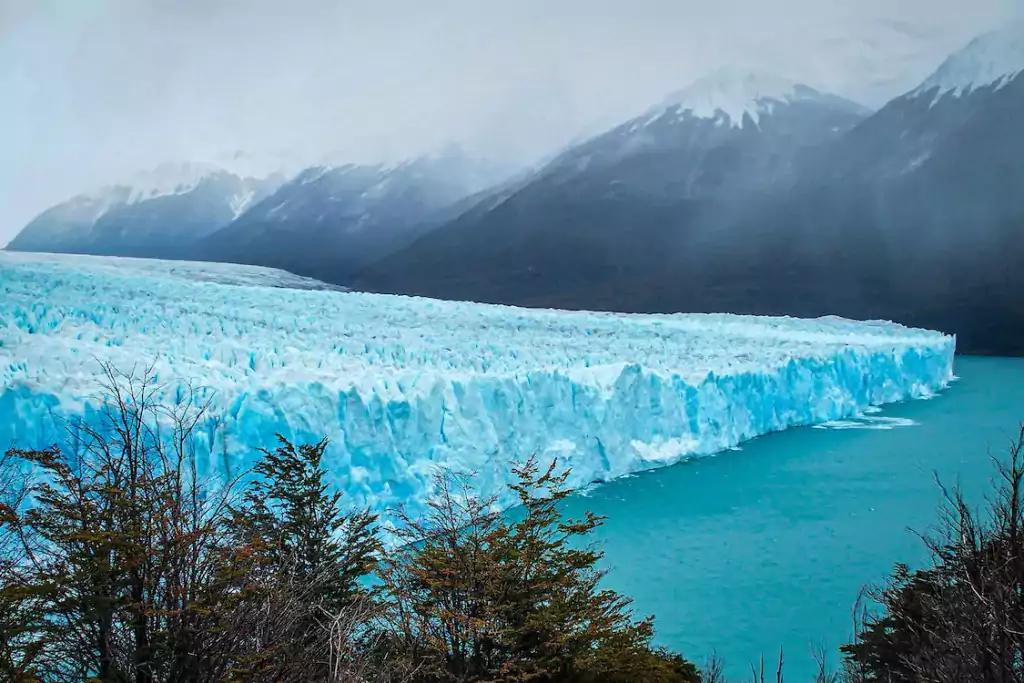
South Argentine Patagonia is a stunning and remote region located in the southern part of Argentina. It is known for its breathtaking natural beauty, including rugged landscapes, pristine wilderness, and unique wildlife.
The southernmost province of Argentina, Tierra del Fuego, is located in this region. It is known for its dramatic landscapes, including mountains, glaciers, and fjords. The city of Ushuaia, often referred to as the “End of the World,” is the capital of Tierra del Fuego and serves as a gateway for exploration of the area.
South Argentine Patagonia is home to some of the world’s most famous glaciers, including the Perito Moreno Glacier in Los Glaciares National Park. This massive glacier constantly advances and retreats, creating a mesmerizing natural spectacle.
Patagonia is rich in wildlife, and you can expect to see guanacos (similar to llamas), foxes, condors, and pumas if you’re lucky. The coastlines are also important for birdwatching, with penguins, albatrosses, and other seabirds.
South Argentine Patagonia is a haven for adventure enthusiasts. You can partake in activities such as trekking, mountaineering, rock climbing, kayaking, and even ice hiking on glaciers.
Patagonia has a unique history and culture influenced by its indigenous populations and European settlers. You can learn about the region’s history in museums and through interactions with local communities.
This region is known for its remoteness and vast wilderness areas. It’s a place where you can truly disconnect from the modern world and immerse yourself in nature.
Getting to South Argentine Patagonia usually involves flying to cities like Ushuaia, El Calafate, or Punta Arenas in Chile and then traveling by road to reach the various natural attractions.
Whether you’re a nature lover, an adventure seeker, or simply someone looking to experience the rugged beauty of a remote wilderness, South Argentine Patagonia offers a wide range of experiences and opportunities for exploration. It’s a destination that continues to captivate travelers from around the world.
What to visit?
El Calafate
El Calafate is a small city located in the Patagonian region of Argentina. It is situated in the southern part of the Santa Cruz Province, in the southern Andes near the border with Chile.
El Calafate serves as the main gateway to Los Glaciares National Park, one of Argentina’s most renowned national parks. The park is famous for its pristine landscapes, numerous glaciers, and rugged mountain terrain.
The Perito Moreno Glacier is one of the most iconic natural attractions in the region and is easily accessible from El Calafate. It’s known for its massive size and the dramatic ice formations that regularly calve into Lake Argentino. Visitors can take boat trips or walk along viewing platforms to witness this natural spectacle up close.
El Calafate is a hub for outdoor enthusiasts. Visitors can explore a variety of hiking trails within Los Glaciares National Park, ranging from easy walks to challenging treks. The park offers a range of options to suit different fitness levels.
The region around El Calafate is also known for its wildlife. You might spot guanacos, foxes, condors, and various bird species while exploring the area.
While El Calafate is relatively small, it offers a range of accommodation options, restaurants, and shops catering to tourists. The town has a vibrant atmosphere, particularly during the peak tourist season.
In addition to Perito Moreno Glacier, visitors can explore other nearby glaciers, such as Upsala Glacier and Spegazzini Glacier, through boat tours and excursions.
El Chaltén
El Chaltén is a charming and picturesque town located in the Patagonian region of Argentina, within Los Glaciares National Park. It is often referred to as the “Trekking Capital of Argentina” due to its proximity to some of the most famous hiking and trekking routes in the area.
El Chaltén is renowned for its numerous hiking and trekking opportunities. The town serves as the gateway to some of Patagonia’s most iconic trails, including those leading to Mount Fitz Roy and Cerro Torre. Hikers of all skill levels can explore these trails, which offer breathtaking vistas of glaciers, pristine lakes, and dramatic mountain peaks.
The town is located at the base of the spectacular Mount Fitz Roy (Cerro Fitz Roy), which is one of the most famous peaks in the Andes. Climbers and hikers from around the world come to El Chaltén to see and photograph this stunning mountain.
Another iconic peak near El Chaltén is Cerro Torre, known for its distinctive spire-like shape. Treks to the base of Cerro Torre offer spectacular views and a chance to admire this challenging climbing destination.
The park’s visitor center in El Chaltén provides valuable information about hiking trails, weather conditions, and the park’s flora and fauna. It’s a good starting point for planning your outdoor adventures.
El Chaltén is surrounded by natural beauty and is a great place for wildlife enthusiasts. You may encounter guanacos, foxes, condors, and various bird species while exploring the trails.
The town is nestled in a breathtaking natural setting, with views of snow-capped mountains, glaciers, and the Rio de las Vueltas. It’s an excellent place to relax and enjoy the stunning scenery.
El Chaltén is known for its commitment to sustainable and eco-friendly tourism practices, with a focus on preserving the natural environment.
Ushuaia
Ushuaia is the southernmost city in the world and is located in the Tierra del Fuego province of Argentina. It is situated on the southern coast of the island of Tierra del Fuego, near the southern tip of South America. Ushuaia is often referred to as the “End of the World” due to its remote location and its status as the southernmost urban center on the planet.
Ushuaia is a major embarkation point for cruises to Antarctica. Many tourists visit Ushuaia as a starting point for their expeditions to the continent, making it an important hub for Antarctic exploration.
The city is surrounded by stunning natural landscapes, including snow-capped mountains, glaciers, and the Beagle Channel. The nearby Martial Glacier is a popular destination for hiking and winter sports.
Tierra del Fuego National Park is located just a short drive from Ushuaia and offers a wide range of outdoor activities, including hiking, wildlife viewing, and boat tours. It’s known for its beautiful forests, lakes, and hiking trails.
Ushuaia is home to the “End of the World Train” (Tren del Fin del Mundo), which offers a scenic journey through the Tierra del Fuego National Park, showcasing the region’s history and natural beauty.
The Beagle Channel is known for its rich marine life. Visitors can take boat tours to spot sea lions, penguins, dolphins, and various bird species.
Ushuaia offers a wide range of adventure activities, including trekking, kayaking, sailing, and winter sports like skiing and snowboarding.
Besides Antarctica, Ushuaia is a departure point for cruises to explore the southern fjords and islands of Patagonia.
North Patagonia (ARG)
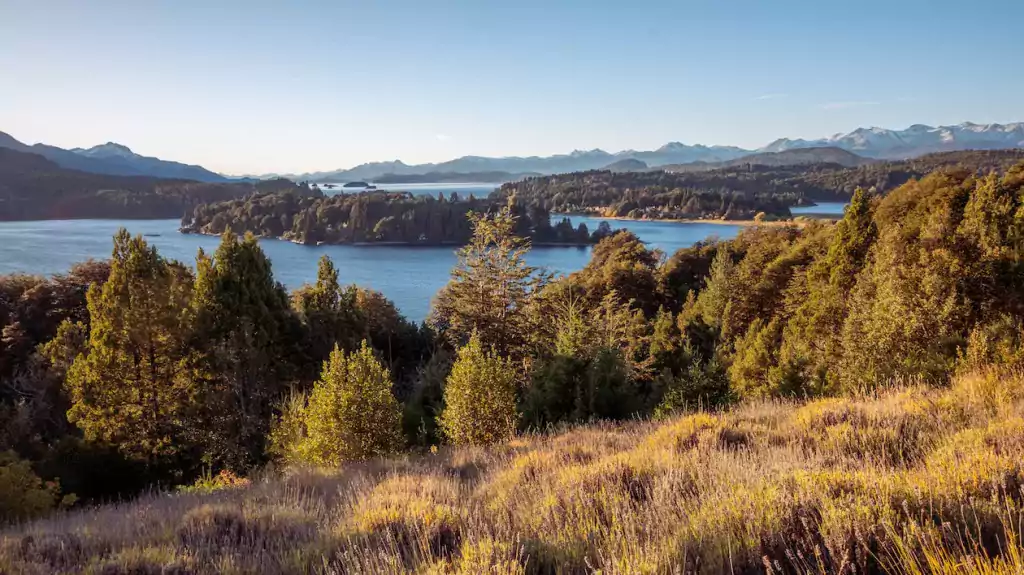
The Argentinian North Patagonia, often referred to as Northern Patagonia, is a region in the northern part of the Patagonian region in Argentina. This area is known for its stunning landscapes, including lakes, rivers, mountains, and forests.
Neuquén and Río Negro Provinces: These provinces offer a variety of outdoor adventures, from rafting in the Limay River to exploring the wine regions around Neuquén.
Many traditional Patagonian ranches or estancias offer opportunities for visitors to experience gaucho culture and participate in activities like horseback riding and sheep shearing.
A ski resort near San Martín de los Andes, Chapelco offers winter sports like skiing and snowboarding and serves as a great base for exploring the surrounding natural beauty.
Huemul Route: This remote and challenging route takes adventurous hikers through the rugged wilderness of Northern Patagonia, passing through some of the most pristine and untouched landscapes in the region.
Argentinian North Patagonia is a region of incredible natural beauty, offering a wide range of outdoor activities and opportunities to explore the stunning landscapes of the Andes and the Patagonian wilderness. Whether you’re interested in hiking, water sports, or simply enjoying the breathtaking views, this region has something to offer every nature enthusiast.
What to visit?
Bariloche
This mountain city is the gateway to Patagonia on the Argentine side. It is possible to reach it by air from Buenos Aires or from Chile via the Andean crossing. Bariloche and its surroundings are famous for their ski resorts in winter. During the summer, the trekking circuits open with mountain shelters in addition to activities such as kayaking or rafting.
Bariloche, short for San Carlos de Bariloche, is a city located in the Argentine Patagonia region, in the province of Río Negro, Argentina. It is situated in the foothills of the Andes mountains, on the southern shores of Lake Nahuel Huapi. Bariloche is known for its stunning natural beauty, including pristine lakes, snow-capped mountains, and lush forests, making it a popular destination for tourists and outdoor enthusiasts.
Nahuel Huapi National Park is known for its diverse ecosystems, which range from rugged mountains to dense forests. It offers numerous opportunities for hiking, camping, and wildlife viewing.
A popular ski resort located just outside Bariloche, Cerro Catedral offers excellent skiing and snowboarding in the winter and hiking and mountain biking in the summer.
This iconic building in the center of Bariloche serves as the city’s administrative hub and is an architectural landmark. It offers great views of the surrounding area.
Bariloche is famous for its chocolate production. You’ll find numerous chocolate shops and factories, making it a sweet spot for chocolate lovers.
Circuito Chico scenic drive takes you around the Nahuel Huapi Lake, offering breathtaking views of the lake and surrounding mountains.
Bariloche is a haven for outdoor enthusiasts with numerous hiking and trekking trails. The trek to Cerro Campanario is particularly popular for its panoramic views.
The numerous lakes and rivers around Bariloche offer opportunities for water sports like kayaking, sailing, and fishing.
Bariloche has a growing craft beer scene, and you can visit local breweries to taste a variety of beers.
Bariloche is a year-round destination, with winter being the peak season for snow sports, and summer attracting hikers and outdoor enthusiasts. The city is also famous for its Swiss and German-style architecture and cuisine, which adds a unique cultural dimension to the experience of visiting this beautiful part of Argentina.
San Martín de los Andes
San Martín de los Andes is a picturesque town located in the Argentine Patagonia region, in the province of Neuquén, Argentina. Situated in the Lanín National Park, the town is known for its stunning natural beauty, nestled in the Andes mountains and surrounded by pristine lakes, forests, and snow-capped peaks. San Martín de los Andes is a popular destination for outdoor enthusiasts, offering a range of recreational activities and attractions.
The town serves as a gateway to the Lanín National Park, which offers a diverse range of outdoor activities, including hiking, fishing, camping, and wildlife watching. The park is home to the Lanín Volcano, and its landscapes are a paradise for nature lovers.
The town is located on the shores of Lake Lácar, a beautiful glacial lake with crystal-clear waters. Nearby, there are other lakes like Lake Machónico and Lake Hermoso, offering opportunities for swimming, kayaking, and fishing.
Road of the Seven Lakes (Ruta de los Siete Lagos): This scenic drive takes you through a breathtaking landscape of seven pristine mountain lakes surrounded by lush forests. It’s a popular route for day trips and offers numerous opportunities for photography and picnicking.
Chapelco is a nearby ski resort that also offers year-round activities like golfing and mountain biking. In the winter, it’s a popular destination for skiing and snowboarding.
San Martín de los Andes is a hub for hiking and trekking, with trails of varying difficulty levels. The popular trails include the Sendero de los Arrayanes, which leads to a beautiful forest of rare cinnamon-colored trees.
El Bolsón
El Bolsón is a small town located in the Argentine Patagonia, specifically in the province of Río Negro. It is situated in a valley within the Andes mountains and is known for its stunning natural surroundings, a laid-back atmosphere, and a strong sense of community. El Bolsón is a popular destination for travelers seeking outdoor activities, artisanal products, and a relaxed lifestyle.
El Bolsón is famous for its artisan markets, where you can find a wide range of handmade crafts, including jewelry, textiles, ceramics, and wooden goods. The Feria Regional de El Bolsón is one of the most well-known markets and is held every week.
The town is surrounded by fruit orchards, and the region is known for its production of organic fruits, particularly apples, cherries, and raspberries. You can visit local orchards and try fresh fruit products.
Cerro Piltriquitrón: This iconic mountain offers hiking opportunities and panoramic views of the surrounding area. The ascent is challenging but rewarding for those who love trekking and outdoor adventures.
El Bolsón has a network of hiking and trekking trails that cater to a range of skill levels. The Lago Puelo National Park, located nearby, offers more opportunities for outdoor activities.
The area around El Bolsón is suitable for paragliding, and you can find companies that offer tandem flights for adventurous visitors.
Lago Puelo lake is located about 15 kilometers from El Bolsón and is an excellent spot for swimming, fishing, and kayaking.
El Bolsón is also known for its relaxed and alternative lifestyle, with a significant presence of artists, artisans, and those interested in organic and sustainable living. The town’s unique atmosphere and its proximity to the natural beauty of the Patagonian Andes make it an appealing destination for travelers looking for a more bohemian and nature-centered experience.
Ruta 40 Patagonia
Route 40, known as “Ruta 40” in Spanish, is a famous and iconic road in Argentina. It is one of the longest national routes in the world, spanning over 5,000 kilometers (3,100 miles) from the northern border with Bolivia to the southern tip of the country in Tierra del Fuego. Route 40 stretches through a wide variety of landscapes, providing travelers with a unique and picturesque journey through Argentina.
Route 40 traverses a diverse range of terrains, including deserts, mountains, plateaus, forests, and coastal regions. It passes through the Andes, the Puna region, the wine-producing areas of Mendoza and Cafayate, the Patagonian steppe, and the windswept landscapes of southern Patagonia. Traveling this route allows you to witness the incredible natural beauty of Argentina.
Along the route in Patagonia, you’ll find numerous tourist attractions and national parks, such as Los Glaciares National Park (home to the famous Perito Moreno Glacier), Nahuel Huapi National Park, and the Valdes Peninsula, known for its unique wildlife and marine life.
Keep in mind that while Route 40 offers incredible experiences, it can also be a challenging road, particularly in the more remote and mountainous sections. Road conditions may vary, so it’s essential to be well-prepared for long journeys and varying weather conditions
Route 40 has become a popular route for road trips and adventure tourism, and it is often compared to the famous Route 66 in the United States. Traveling along this road is a fantastic way to experience the windswept landscapes of Patagonia, and everything in between.
Península Valdés
The Valdes Peninsula, known as “Península Valdés” in Spanish, is a UNESCO World Heritage site located on the Atlantic coast of Argentina, in the province of Chubut. It is renowned for its unique and diverse ecosystem, which includes a variety of marine life and wildlife.
The Valdes Peninsula is one of the best places in the world for wildlife observation. It is particularly famous for its populations of marine mammals, including southern right whales, orcas, elephant seals, sea lions, and fur seals. The peninsula serves as a critical breeding and nursing ground for many of these species.
The waters around the Valdes Peninsula are a prime location for whale watching, especially between June and December when southern right whales migrate to the area to give birth and raise their calves.
The waters off the Valdes Peninsula are one of the few places in the world where you can see orcas hunting sea lions. This is a remarkable and unique behavior that draws researchers and wildlife enthusiasts to the region.
The peninsula is also a haven for bird watchers, with various species of seabirds and shorebirds.
The Valdes Peninsula is also an important site for research and conservation efforts. It has been designated a UNESCO World Heritage site due to its ecological significance.
Visiting the Valdes Peninsula is a unique opportunity to get up close and personal with some of the world’s most incredible marine and terrestrial wildlife.
The region’s stunning natural beauty and exceptional biodiversity make it a must-visit destination for nature lovers and wildlife enthusiasts.
Why people loves nave tours
 NMC2023-04-15A Special Travel Agent During our family's trip to Chile and Argentina from December 2022 to January 2023, Mario Mellado from Nave Tours provided exceptional service. Mario promptly responded to our requests and worked with us to create a customized itinerary that included excellent guides and hotel accommodations. Even when we faced an unexpected airline disruption that required several changes to our plans, Mario quickly responded and efficiently reworked our itinerary. He also ensured that we received eligible refunds for prepaid hotel costs. Mario went above and beyond to make our trip enjoyable, demonstrating a high level of care for our family's needs. Overall, we highly recommend Mario and Nave Tours for their excellent service.
NMC2023-04-15A Special Travel Agent During our family's trip to Chile and Argentina from December 2022 to January 2023, Mario Mellado from Nave Tours provided exceptional service. Mario promptly responded to our requests and worked with us to create a customized itinerary that included excellent guides and hotel accommodations. Even when we faced an unexpected airline disruption that required several changes to our plans, Mario quickly responded and efficiently reworked our itinerary. He also ensured that we received eligible refunds for prepaid hotel costs. Mario went above and beyond to make our trip enjoyable, demonstrating a high level of care for our family's needs. Overall, we highly recommend Mario and Nave Tours for their excellent service. Travelwag2023-03-26I highly recommend NAVE TOURS. I was struggling to book travel to Chile when I came across Chiara on a web search. I was reluctant to book with a company unknown to me, but after meeting face to face via WhatsApp with Chiara, my husband and I felt comfortable booking with her. She made excellent recommendations and saved us from spending time in undesirable locations. Chiara was exceptionally responsive and got back to me in a very timely manner as we worked to put an itinerary together. The 3 weeks went without a hitch. Incredibly all the tour guides and transfers arrived exactly as planned. The tours were all with English speaking guides and excellent. I can’t recommend this company enough. In regards to the payment, Nave suggested using WISE money transfer. This was a leap of faith for me as I was not familiar with this platform. The fees are exceptionally low for transfers. I took the plunge and hoped for the best and again, this payment method worked well. If we travel in South America again I will be booking with Nave Tours.
Travelwag2023-03-26I highly recommend NAVE TOURS. I was struggling to book travel to Chile when I came across Chiara on a web search. I was reluctant to book with a company unknown to me, but after meeting face to face via WhatsApp with Chiara, my husband and I felt comfortable booking with her. She made excellent recommendations and saved us from spending time in undesirable locations. Chiara was exceptionally responsive and got back to me in a very timely manner as we worked to put an itinerary together. The 3 weeks went without a hitch. Incredibly all the tour guides and transfers arrived exactly as planned. The tours were all with English speaking guides and excellent. I can’t recommend this company enough. In regards to the payment, Nave suggested using WISE money transfer. This was a leap of faith for me as I was not familiar with this platform. The fees are exceptionally low for transfers. I took the plunge and hoped for the best and again, this payment method worked well. If we travel in South America again I will be booking with Nave Tours. AHMED2023-01-02Tailored trips by Mario(Nave Tours) Mario arranged everything in my trip from A to Z tailored on my requirements, and given attention to details based on previous trips which he arranged(like in what are my accommodation preferences, duration of stays, private transportation , etc.). In addition, the people who pick me up from airport are always English speakers, friendly and besides they are locals. So they explain detailed history of the places visiting and also offering any sort of support needed. I only rely on Mario for my Central/South American countries, highly recommended!!
AHMED2023-01-02Tailored trips by Mario(Nave Tours) Mario arranged everything in my trip from A to Z tailored on my requirements, and given attention to details based on previous trips which he arranged(like in what are my accommodation preferences, duration of stays, private transportation , etc.). In addition, the people who pick me up from airport are always English speakers, friendly and besides they are locals. So they explain detailed history of the places visiting and also offering any sort of support needed. I only rely on Mario for my Central/South American countries, highly recommended!! Erin P2022-12-12Definitely worth hiking Aguas de Ramon in Santiago We used nave tours to hike Aguas de Ramon outside of Santiago! He booked a guide for us that arranged communication, pick up, drop off, park fees, and info. Our guide was wonderful and very accommodating. He carried our extra water and let one of us use his hiking stick. It would have been a much less enjoyable hike without his presence!
Erin P2022-12-12Definitely worth hiking Aguas de Ramon in Santiago We used nave tours to hike Aguas de Ramon outside of Santiago! He booked a guide for us that arranged communication, pick up, drop off, park fees, and info. Our guide was wonderful and very accommodating. He carried our extra water and let one of us use his hiking stick. It would have been a much less enjoyable hike without his presence! Marian S2020-03-06Made to feel special I travelled solo to Chile in February 2020. I booked an Antarctic Cruise leaving from Punta Arenas and wanted activities on either side of the cruise dates that would give me a fair view of what Chile is like. After months of exploring ideas, available tours and costs I despaired at finding anything suitable that did not involve paying a single supplement for accommodation or space on a tour. I Googled for travel agents with specialised knowledge of Chile and asked for help in securing single-priced accommodation in specific places. Only one agent responded - Nave Tours. Within no time Mario and I agreed on places and activities. He gave valuable input on my ideas and was accommodating in my wish to experience the Mapuche culture. His arrangements here exceeded my expectations.Two weeks before I was due to leave for Chile my Antarctic cruise was cancelled, leaving a gaping hole in my itinerary. Within three days of asking Mario to help fill the gap and expand the range of places to see, it was all finalised and paid for. He extended my scope to include the desert area around La Serena because he knew I'd be interested in indigenous culture. This was a superb idea.The logistics of travel went off without a hitch. Where travel time was long he ensured that my driver was English speaking so I could have conversations about Chile, its culture, history and current tensions. Every plane was met. Each hotel booked without complications on arrival or departure.Mario's email responses to my queries from the far side of the Atlantic at all hours made me feel he didn't sleep much and that I was the only client who mattered. I felt super safe in his hands. I could relax and enjoy my holiday.
Marian S2020-03-06Made to feel special I travelled solo to Chile in February 2020. I booked an Antarctic Cruise leaving from Punta Arenas and wanted activities on either side of the cruise dates that would give me a fair view of what Chile is like. After months of exploring ideas, available tours and costs I despaired at finding anything suitable that did not involve paying a single supplement for accommodation or space on a tour. I Googled for travel agents with specialised knowledge of Chile and asked for help in securing single-priced accommodation in specific places. Only one agent responded - Nave Tours. Within no time Mario and I agreed on places and activities. He gave valuable input on my ideas and was accommodating in my wish to experience the Mapuche culture. His arrangements here exceeded my expectations.Two weeks before I was due to leave for Chile my Antarctic cruise was cancelled, leaving a gaping hole in my itinerary. Within three days of asking Mario to help fill the gap and expand the range of places to see, it was all finalised and paid for. He extended my scope to include the desert area around La Serena because he knew I'd be interested in indigenous culture. This was a superb idea.The logistics of travel went off without a hitch. Where travel time was long he ensured that my driver was English speaking so I could have conversations about Chile, its culture, history and current tensions. Every plane was met. Each hotel booked without complications on arrival or departure.Mario's email responses to my queries from the far side of the Atlantic at all hours made me feel he didn't sleep much and that I was the only client who mattered. I felt super safe in his hands. I could relax and enjoy my holiday. Esther C2020-01-27trip of a lifetime i was googling for agents who could plan a trip to patagonia that would cover 1) all the places i wanted and 2) for the dates that i could travel. loads of agencies out there but nothing that fit my bill or wallet. stumbled across Nanook, which is essentially a matchmaker between you and one of their agents local to the place you want to go, and that’s how i met Mario of Navetours. Mario’s emails may come across curt at first, but i realised that’s just how he phrases things. almost every email i sent was promptly replied to, and with the information i needed. as a solo female, i had loads of questions and concerns about my safety, but Mario was able to put me at ease. when the protests in santiago broke out, he also kept me updated and even offered to change hotels for me to a suburb that was safer and further away from the protests. the tours that he arranged for me were great. i enjoyed myself immensely travelling to south patagonia, tierra del fuego and atacama. the pace was just nice and the people i’ve met were great and friendly too! whatever activities and hikes i wanted to do, mario was able to recommend the right ones. if there’s one that was slightly economically unsound, Mario also made sure that i know before i make any commitment.we kept in constant contact throughout my trip using WhatsApp, which was great for when there’s any issue. the only qualm i had was with the Keoken Hostel; the staff was aloof and even grumpy when they realised i was right and had a reservation with them - when it was actually their staff who forgot to key it in after receiving payment months ago. i’m sure there’re way better accommodations in Punta Arenas. in any case, i would highly recommend Mario and Navetours if you’re heading to Patagonia!
Esther C2020-01-27trip of a lifetime i was googling for agents who could plan a trip to patagonia that would cover 1) all the places i wanted and 2) for the dates that i could travel. loads of agencies out there but nothing that fit my bill or wallet. stumbled across Nanook, which is essentially a matchmaker between you and one of their agents local to the place you want to go, and that’s how i met Mario of Navetours. Mario’s emails may come across curt at first, but i realised that’s just how he phrases things. almost every email i sent was promptly replied to, and with the information i needed. as a solo female, i had loads of questions and concerns about my safety, but Mario was able to put me at ease. when the protests in santiago broke out, he also kept me updated and even offered to change hotels for me to a suburb that was safer and further away from the protests. the tours that he arranged for me were great. i enjoyed myself immensely travelling to south patagonia, tierra del fuego and atacama. the pace was just nice and the people i’ve met were great and friendly too! whatever activities and hikes i wanted to do, mario was able to recommend the right ones. if there’s one that was slightly economically unsound, Mario also made sure that i know before i make any commitment.we kept in constant contact throughout my trip using WhatsApp, which was great for when there’s any issue. the only qualm i had was with the Keoken Hostel; the staff was aloof and even grumpy when they realised i was right and had a reservation with them - when it was actually their staff who forgot to key it in after receiving payment months ago. i’m sure there’re way better accommodations in Punta Arenas. in any case, i would highly recommend Mario and Navetours if you’re heading to Patagonia! Monika M2019-10-07Great service and professional partner. Great service for our travel agency's client from Poland. Nave Tours organized a tailor made trip lasting over 3 weeks including Argentina, Uruguay and Brazil. The cooperation was fantastic and very professional on each step - from planning till the end of guest's trip. Great people, very helpful and perfect organization. An unforgettable experience for our client. We are looking forward to working with you again.
Monika M2019-10-07Great service and professional partner. Great service for our travel agency's client from Poland. Nave Tours organized a tailor made trip lasting over 3 weeks including Argentina, Uruguay and Brazil. The cooperation was fantastic and very professional on each step - from planning till the end of guest's trip. Great people, very helpful and perfect organization. An unforgettable experience for our client. We are looking forward to working with you again. Ida Elise T2019-07-30Peru and Bolivia Very good service and help to create the perfect in Peru and Boliva. Included all the highlights we wanted to see and made a program that was easy to understand and where all the details were included.
Ida Elise T2019-07-30Peru and Bolivia Very good service and help to create the perfect in Peru and Boliva. Included all the highlights we wanted to see and made a program that was easy to understand and where all the details were included. joeymantua2019-06-05Amazing tour guide and enriching cultural experience I went on a study abroad trip with my school visiting Santiago (Chile), Valparaiso (Chile), and Buenos Aires (Argentina). My group's tour guide Mario was personable, informative and great at planning activities. Not only did he take us to great restaurants and tourist attractions but he also provided us with recommendations for when we had nothing planned. Mario's dedication to our group was incredible and he definitely left a positive mark on me and my whole group.
joeymantua2019-06-05Amazing tour guide and enriching cultural experience I went on a study abroad trip with my school visiting Santiago (Chile), Valparaiso (Chile), and Buenos Aires (Argentina). My group's tour guide Mario was personable, informative and great at planning activities. Not only did he take us to great restaurants and tourist attractions but he also provided us with recommendations for when we had nothing planned. Mario's dedication to our group was incredible and he definitely left a positive mark on me and my whole group. Christina2019-06-04An unforgettable experience. For two weeks, I as well as 19 of my peers went on a study abroad trip to Santiago, Chile and Buenos Aires, Argentina with Mario as our tour guide. This was my first time ever traveling out of the United States and everything was EXCELLENT. Mario truly made it an unforgettable experience. He was always patient with our group, made sure everything was scheduled accordingly, and was able to bounce back and work quickly to resolve any bumps that came along. His outgoing and caring personality made the trip even more enjoyable, and I was genuinely sad to see him go when our trip was over.
Christina2019-06-04An unforgettable experience. For two weeks, I as well as 19 of my peers went on a study abroad trip to Santiago, Chile and Buenos Aires, Argentina with Mario as our tour guide. This was my first time ever traveling out of the United States and everything was EXCELLENT. Mario truly made it an unforgettable experience. He was always patient with our group, made sure everything was scheduled accordingly, and was able to bounce back and work quickly to resolve any bumps that came along. His outgoing and caring personality made the trip even more enjoyable, and I was genuinely sad to see him go when our trip was over.
HAVEN’t decided yet?
Let our experts help. Contact us and let’s plan toghether your next trip.
Things not to miss when visiting patagonia
Glaciers, fjords and wildlife on the end of the world
Boat trip to Magdalena Island
Penguin and marine life watching
Full-day Whale and Glaciers. A navigation experience through glaciers and fjords with whale watching.
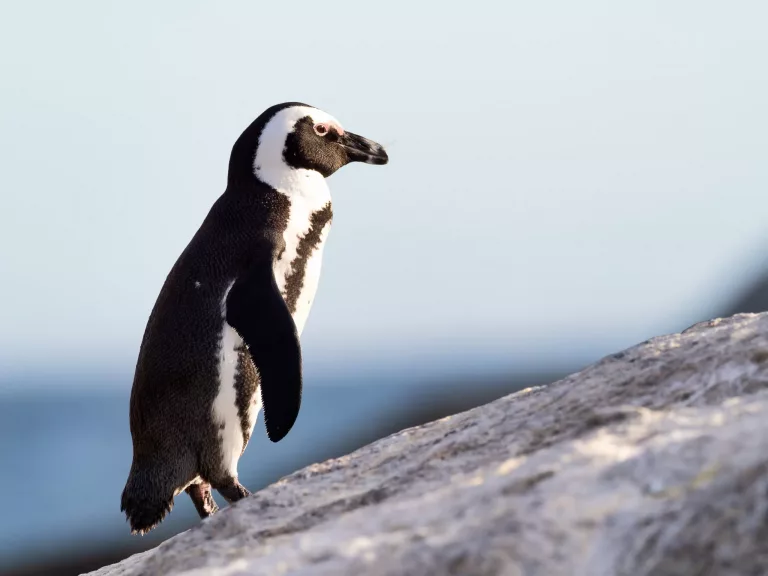
Full-day Whale and Glaciers
A navigation experience through glaciers and fjords with whale watching.
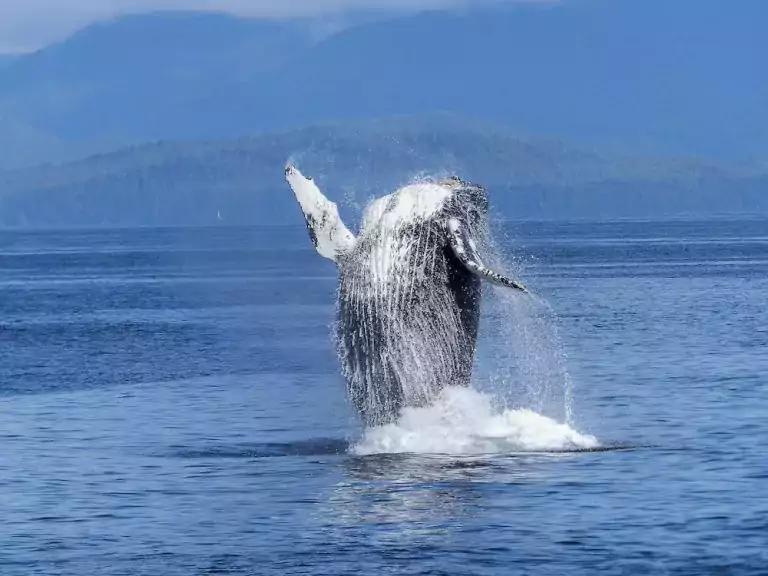
Half-day Punta Arenas City Tour
A journey through the history and culture of this city, with stops at museums.
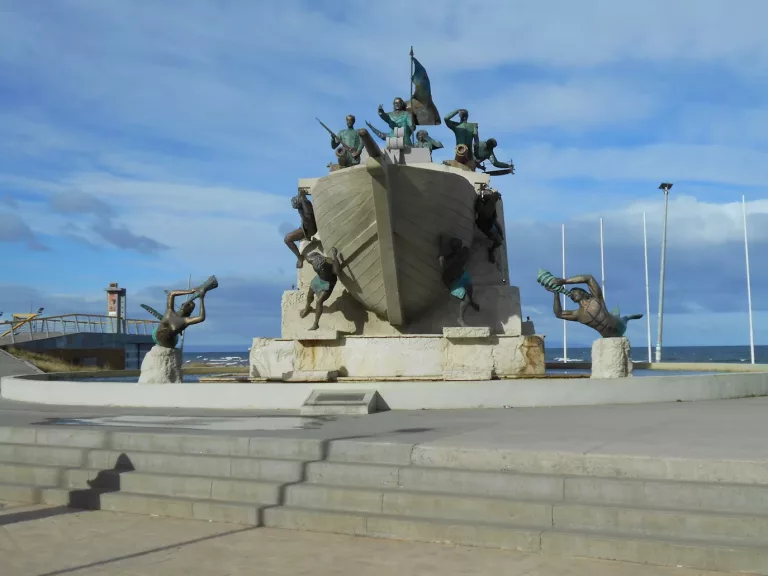
Full-day Torres del Paine and Milodon Cave
With daily departures, we can visit both the Torres del Paine National Park and the Milodon Cave archaeological park by land transport.
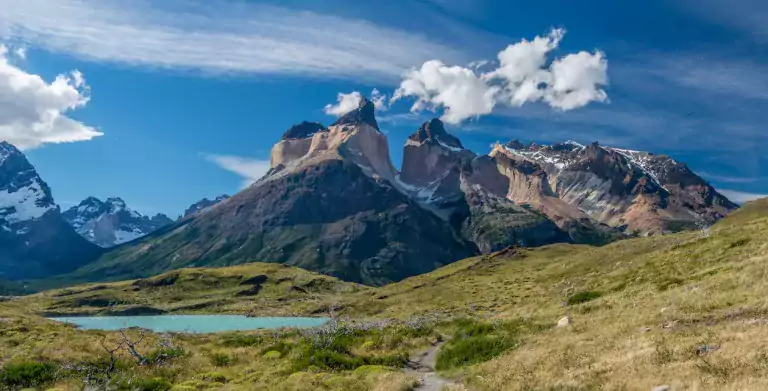
Glacier Grey Navigation
With daily departures at different times, we can go directly to the area Glacier Grey (inside Torres del Paine National Park) where several cruises to the glacier are offered.
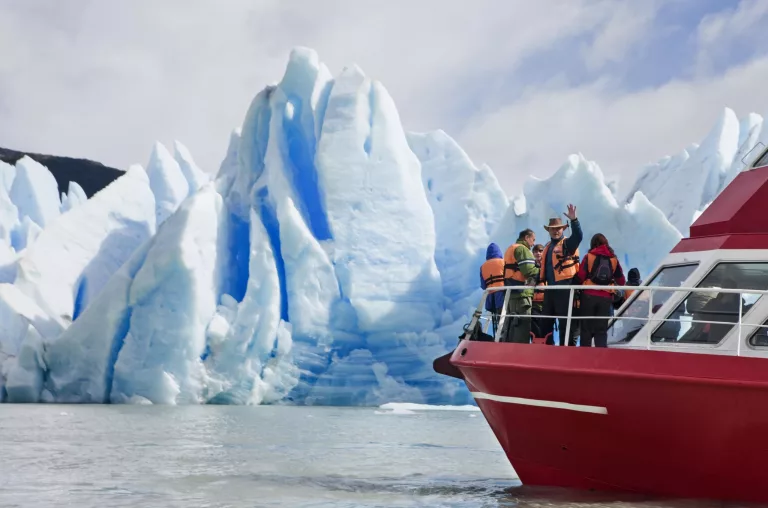
Glaciers Balmaceda and Serrano Navigation
Boat trips from Puerto Natales to visit the Balmaceda and Serrano glaciers and also enjoy a typical Patagonian lunch.
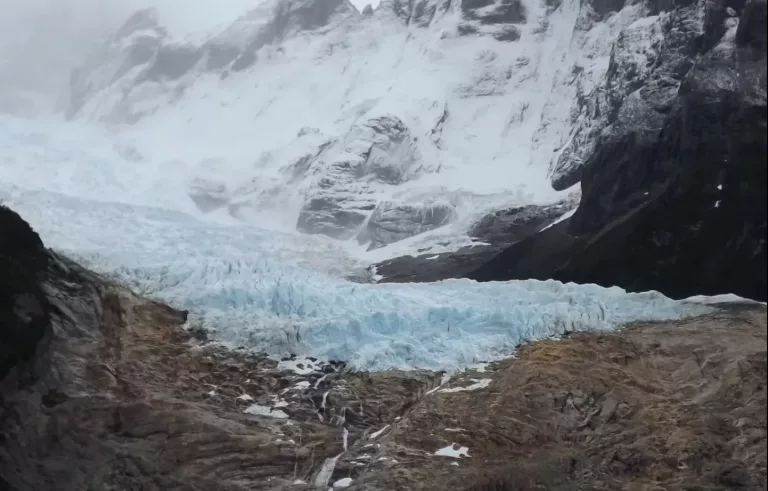
W Trek
This hiking circuit inside the park is one of the most popular activities in the park. Hikers from all over the world come in the spring-summer season to experience its original version (5 days) or the express version (3 days) or the extended (8-day circuit). You can choose to do self-guided versions, with a guide, with a tent, or in shelters with rooms.
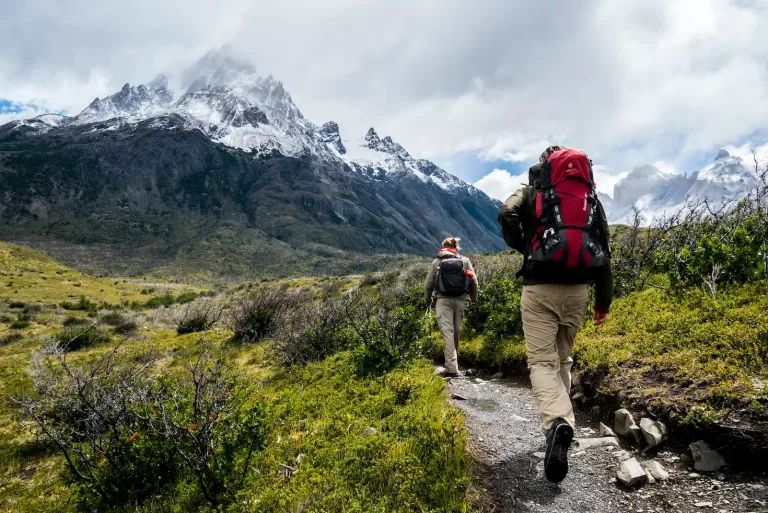
Glacier Grey Navigation
The Grey Glacier is part of the Southern Ice Fields, the third largest ice field after Antarctica and Greenland. Glaciers are constantly growing, so it is possible to see them grow and change throughout the year. Several sailing times are offered during the day.
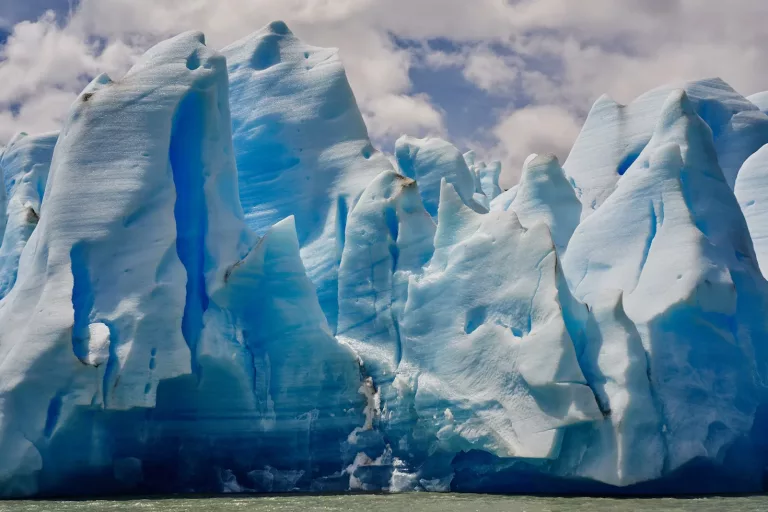
Lodges in Torres del Paine
There are various lodges and hotels in Torres del Paine National Park that offer complete experiences for those who want to immerse themselves in this place.
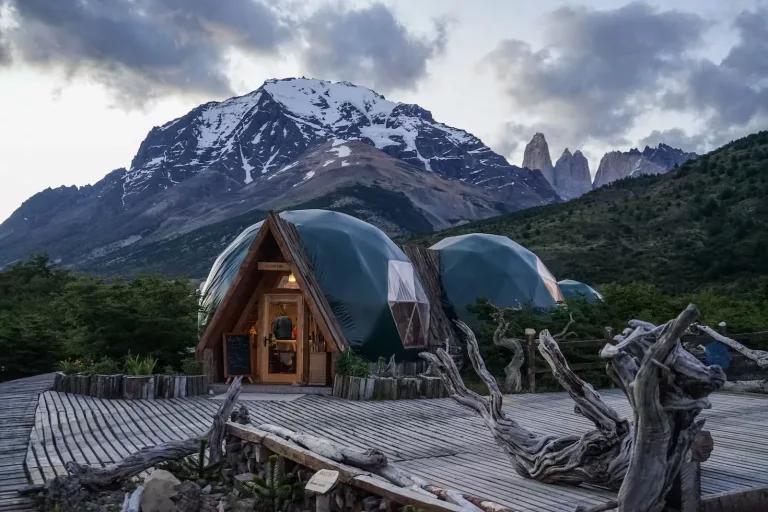
Full Day Perito Moreno
Located in Los Glaciares National Park, Perito Moreno Glacier is the most impressive glacier in Patagonia (part of Southern Ice Field) and offers visits with stunning views from the park’s walkways. In addition, the visit can be complemented with boat rides, kayaking, ice walks, and other activities.
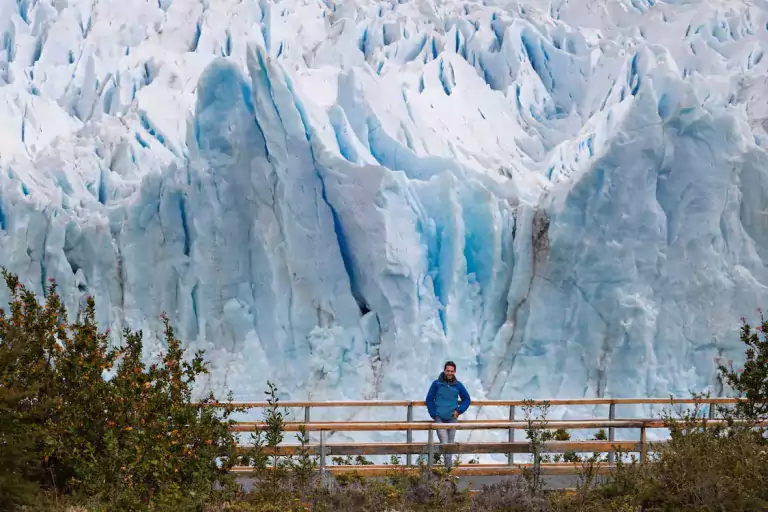
Glacier Gourmet Navigation
This experience, in a boat with gourmet food, includes a visit to several glaciers inside Los Glaciares National Park.
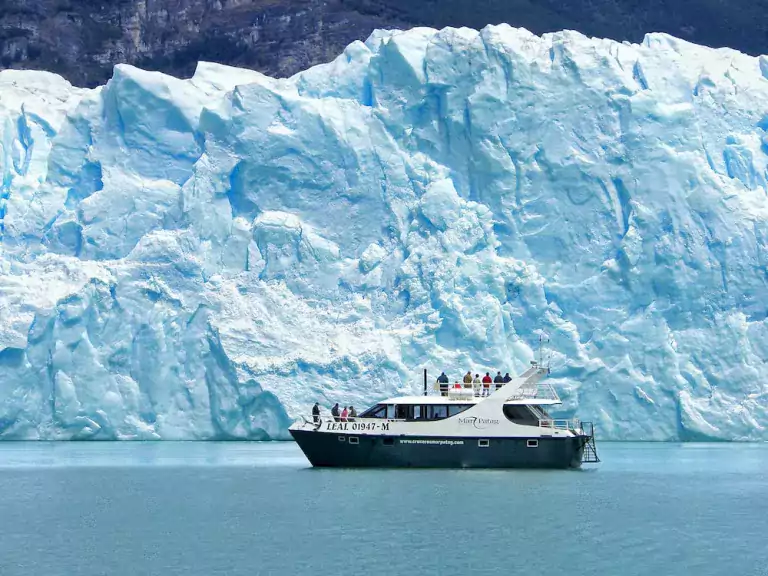
Gaucho Experience
A visit to a typical Patagonian ranch where you can learn about the history of the gauchos (habitants of Patagonia since colonization). You will learn about their agriculture, livestock, customs, and you will also be able to enjoy a gaucho dinner with traditional dances.
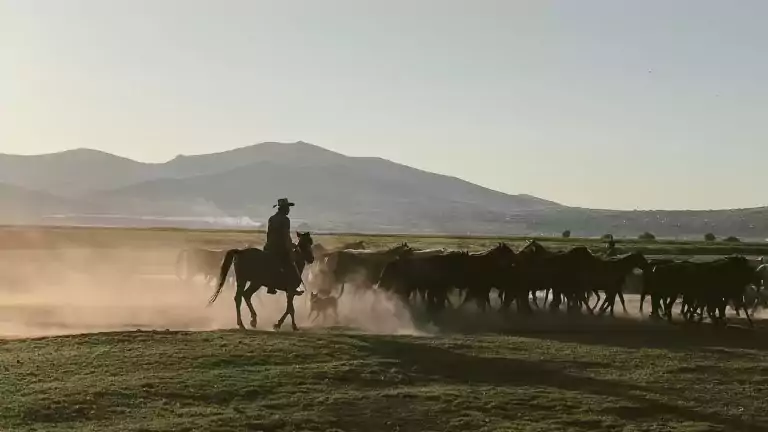
Full Day El Chalten
Full Day El Chalten: From El Calafate, there are daily departures to El Chalten for practicing hiking or rafting.
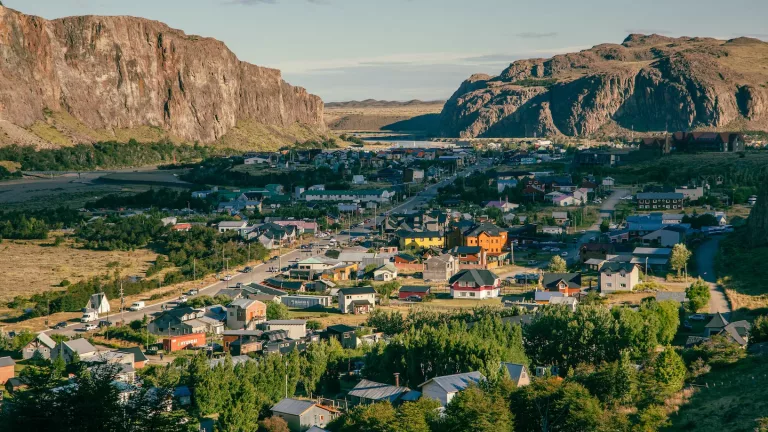
Guided and Self-guided walks
There are many options that are adapted to the physical conditions of each hiker.
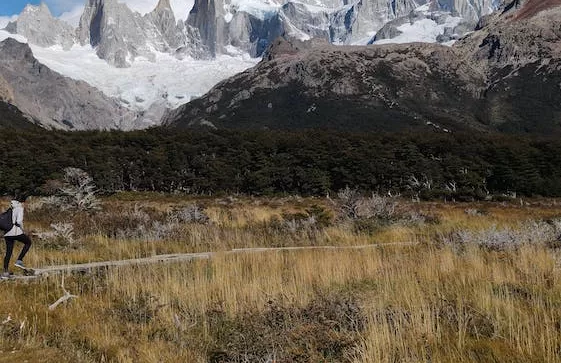
Rafting
In the summer season, there are daily trips to enjoy this fun experience.
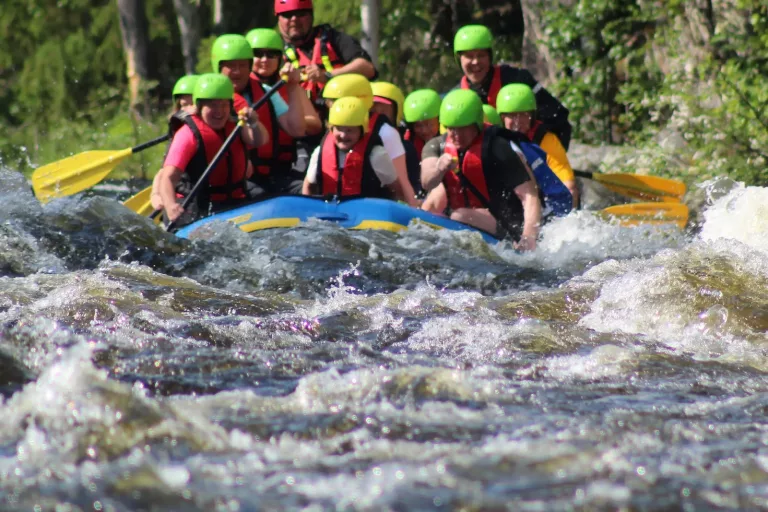
Tierra del Fuego National Park
Here, it is possible to take beautiful contemplative walks in the summer season.
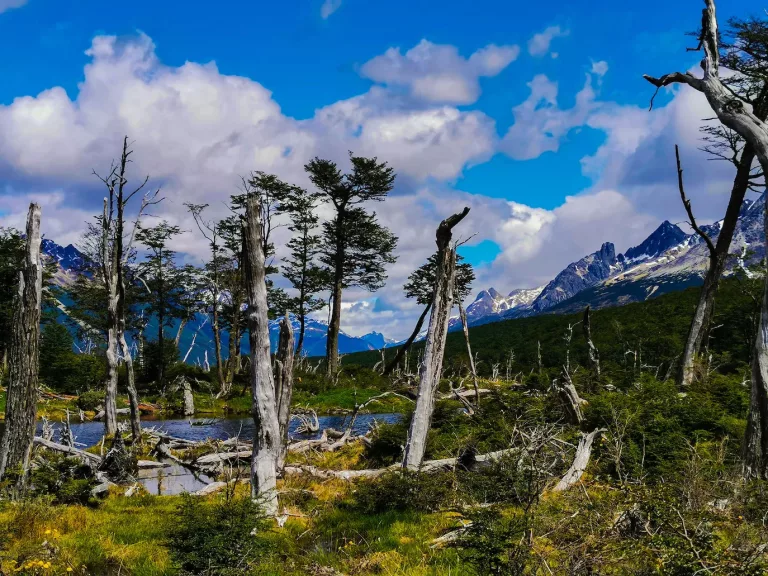
Navigations through the Beagle Channel
Wildlife watching and the history of the place are some of the attractions of these navigations
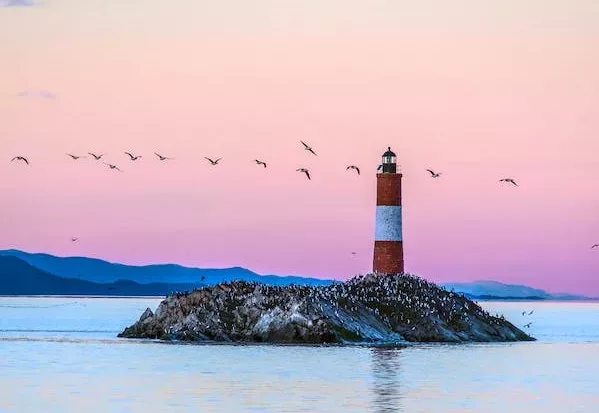
Visit the Petrohué Falls and Peulla
The Petrohué Falls are a set of waterfalls with walkways and views of the Osorno volcano. It is located in Vicente Pérez Rosales National Park, the oldest in Chile. In a full day tour, we can visit these falls and then embark on the Emerald Lake that is the route to Peulla, a town in the middle of the Andes Mountains where accommodation and ecotourism activities are offered. From Peulla, we can also continue to Bariloche, Argentina on a trip that includes navigations, buses, mountain landscapes, and rainforest
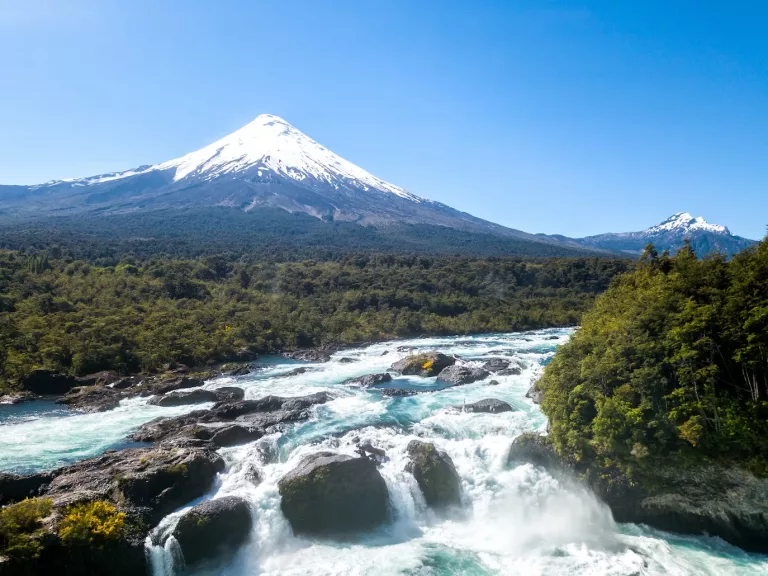
Osorno Volcano
Visiting the Osorno Volcano Ski Center is also a must for anyone visiting Puerto Montt. We can combine this visit with also visiting the Petrohué Falls.
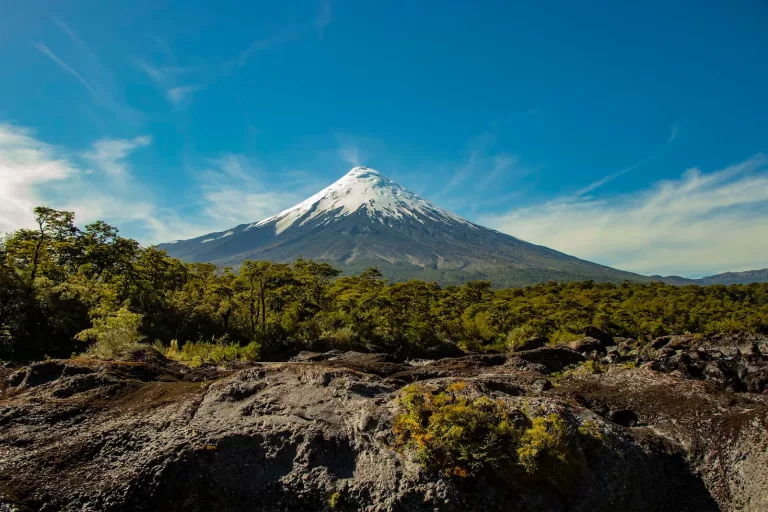
Chiloé National Park
Rich in endemic biodiversity, this park offers hiking trails and visits with expert guides in biodiversity. Lovers of lichens and wet and always green vegetation is one of the many reasons why it is a must visiting this park.
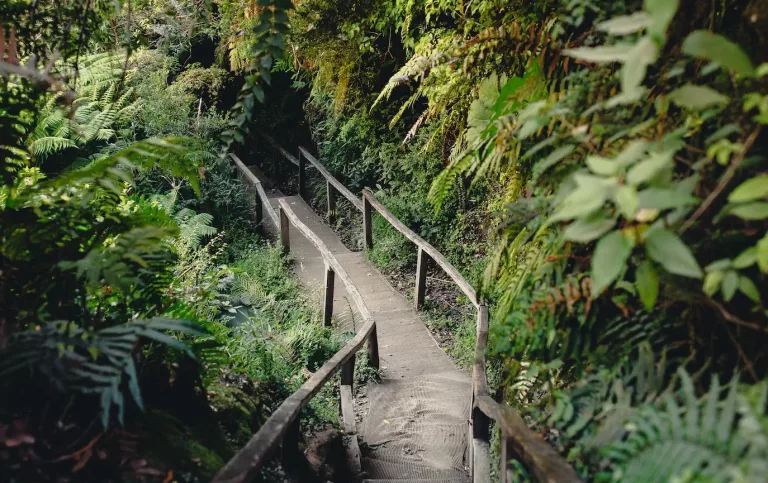
Muelle de las Almas
It is sculpture by the artist Marcelo Orellana Riveras that contains a rich legend: The souls must embark on this pier to reach their final resting place. You can get acces to this brige after a 2-kilometer walk.
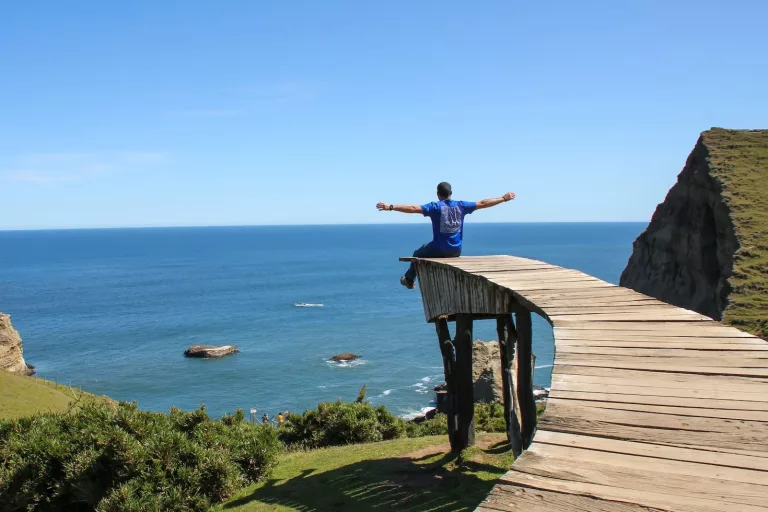
Churches of Chiloé
Because of its unique wooden architecture, the churches of Chiloé are part of Chile’s cultural heritage.
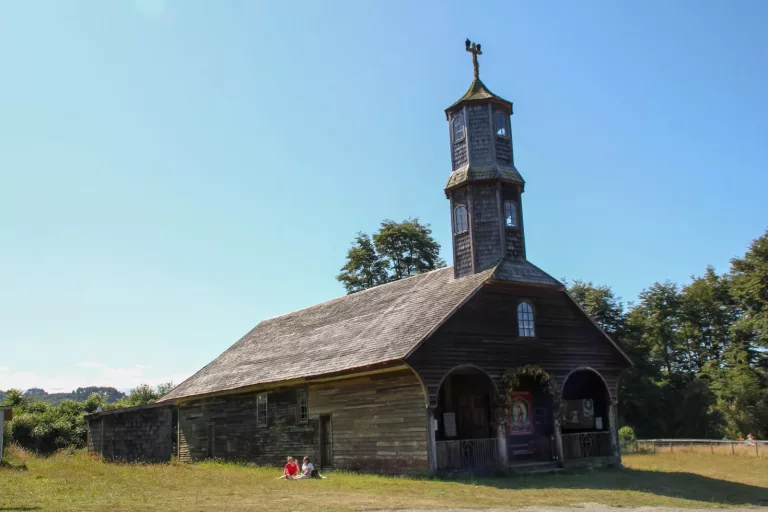
Full Day to the Ventisquero Queulat Glacier
Located in the Queulat National Park, this hanging glacier offers stunning views. Nearby is the town of Puyuhuapi, which offers hot springs and boat rides to see dolphins, an excellent option for those who want to spend the night there.
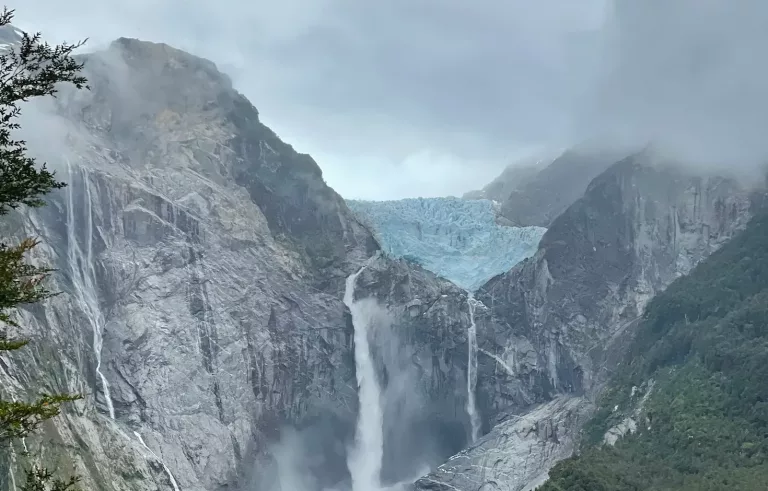
Puerto Chacabuco
With all-inclusive accommodations and cruises to Laguna San Rafael and the Northern Ice Fields, this area offers a complete experience for visitors looking for comfort.
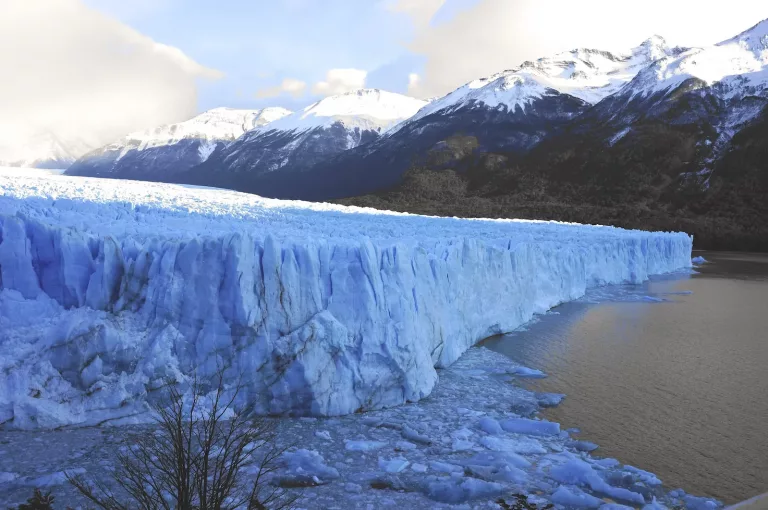
Cerro Castillo
For hiking enthusiasts, Cerro Castillo has been compared to Torres del Paine, with incredible multi-day hiking trails. Both these multi-day hikes and the panoramic views from the Carretera Austral offers a unique experience.
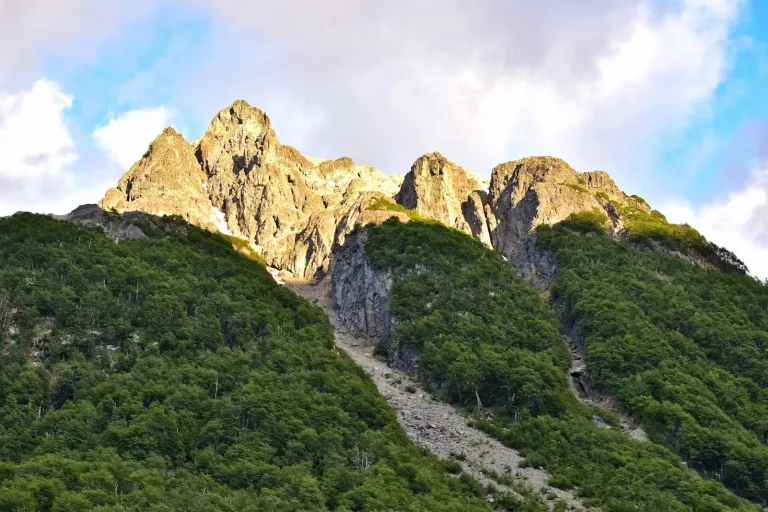
Full Day in the Marble Caves
For those with limited time in this area, they can visit the Marble Caves on an extensive full-day tour from Coyhaique.
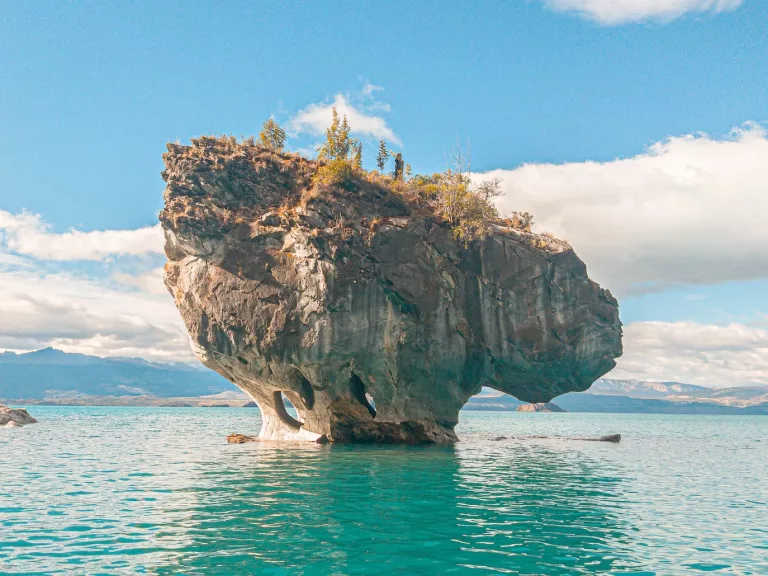
Boat trip to the Marble Caves
From Puerto Río Tranquilo (on the shores of Lake General Carrera), you can take a boat trip to these marble rock formations. The turquoise color of the water makes a beautiful contrast with the color of the marble. We recommend this expedition in the morning.
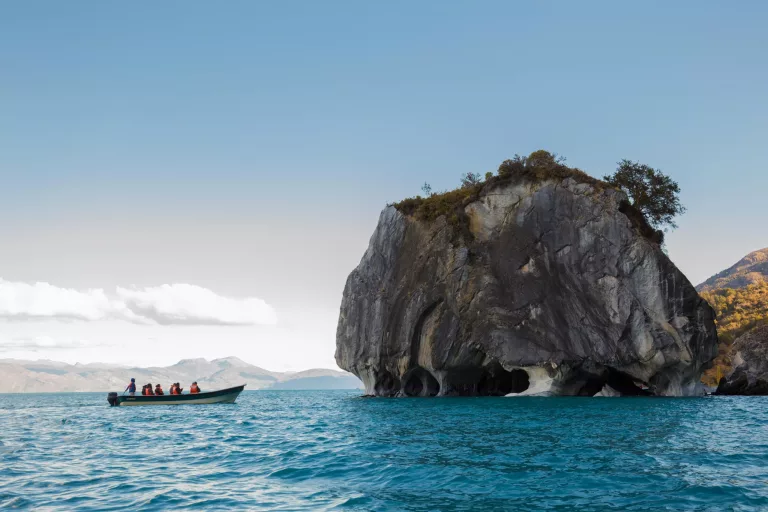
Laguna San Rafael
From Puerto Río Tranquilo, there are excursions by land or water to visit Laguna San Rafael and its glaciers.
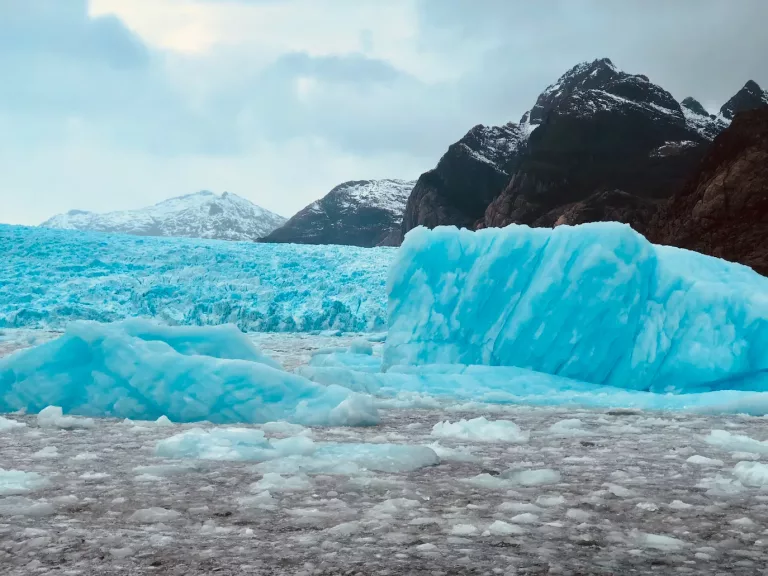
Rock paintings
From Chile Chico, it is possible to visit the Cave of the Hands with paintings that are 10,000 years old.
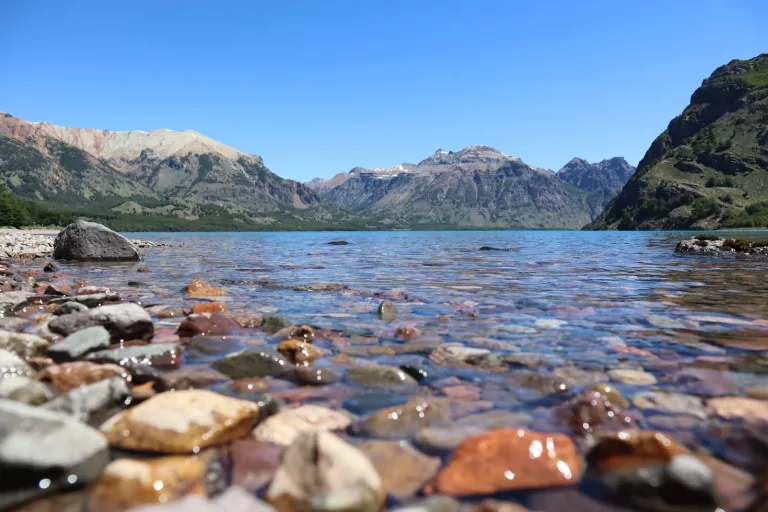
Rafting on the Baker River
This river is the most voluminous in Chile, with beautiful turquoise colors. During the summer season, it is possible to participate in activities such as rafting or kayaking.
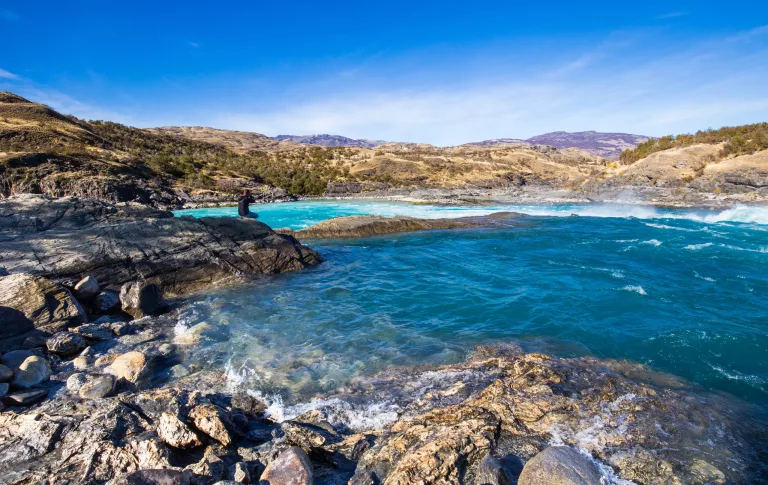
The Seven Lakes Route
From Bariloche to the city of San Martín de los Andes, there is a beautiful route of 7 lakes with stunning landscapes. San Martín de los Andes is a home to ski resorts and also offers expeditions to Volcán Lanín.
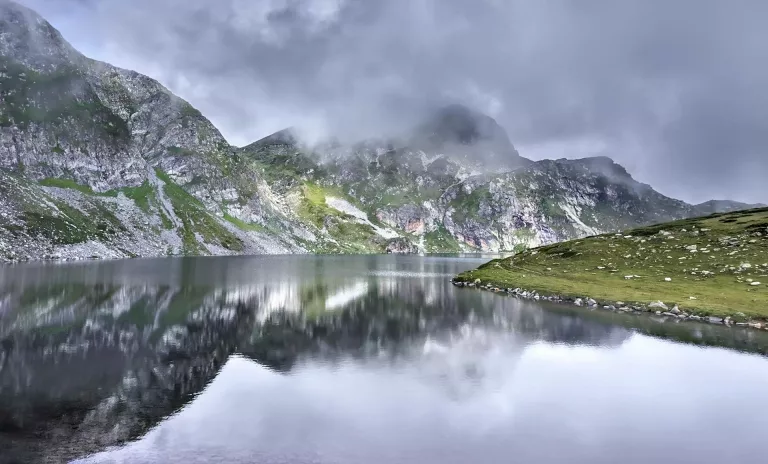
Chile Andean Crossing
From Bariloche, we can take a 1 or 2-day excursion called the Andean Crossing, which connects the city of Bariloche with the city of Puerto Varas in Chile. This crossing is surrounded by Andean and jungle landscapes. A mix of land and water transportation services.
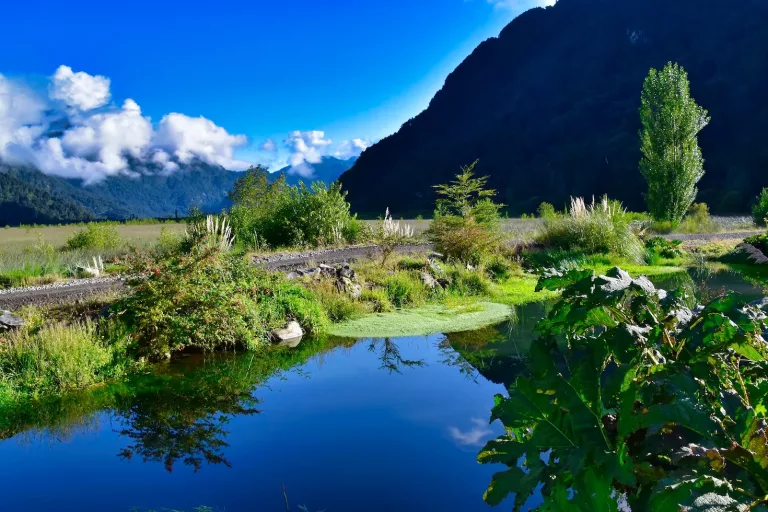
La Comarca
South of Bariloche, we find La Comarca, a region that includes towns such as El Bolson (with its famous hippie craft fair), Puelo, Epuyen, and El Hoyo. It is called La Comarca because many hippies and “alternative” people have found a place here to develop an alternative society. Many of them have developed art based on elves and fairies.
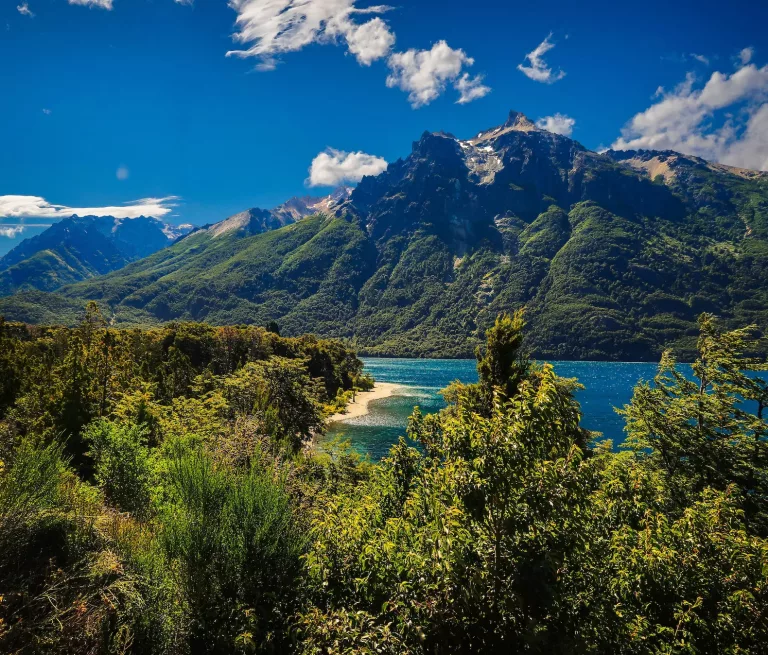
Escape Rooms
In the city of Bariloche, we can find very fun escape rooms to have a good time in groups. This is because Bariloche is also a destination for student tourism from Argentina and Chile.
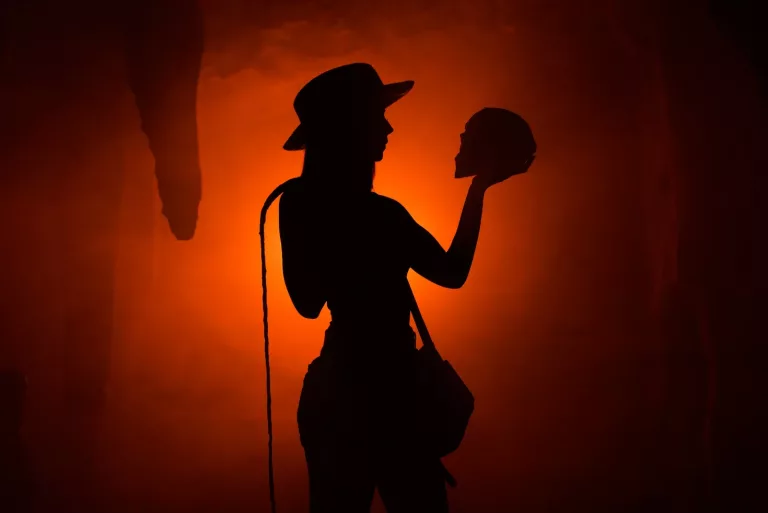
Self-driving from Bariloche to El Calafate
It is possible to rent vehicles in Bariloche and travel this section of Route 40 by vehicle.
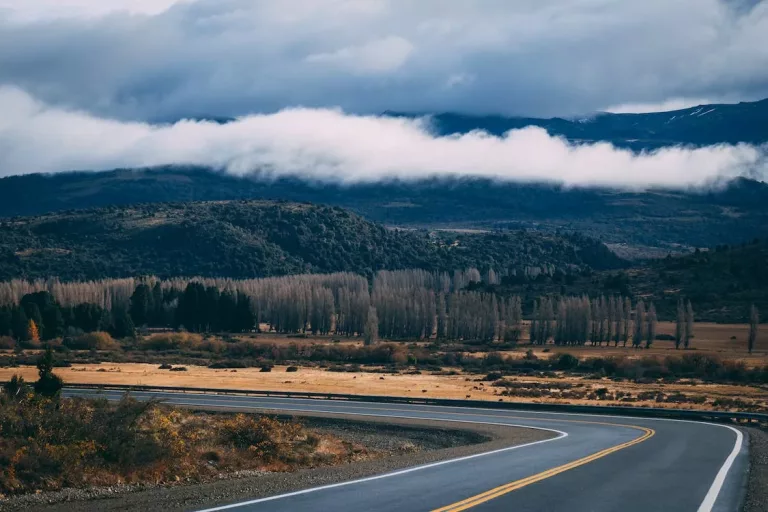
Perito Moreno
The city of Perito Moreno (not to be confused with the glacier of the same name) is located 20 minutes from Lake Buenos Aires (called Lake General Carrera on the Chilean side), making it a good starting point for excursions to the Marble Caves and other attractions in the area on both the Chilean and Argentine sides.
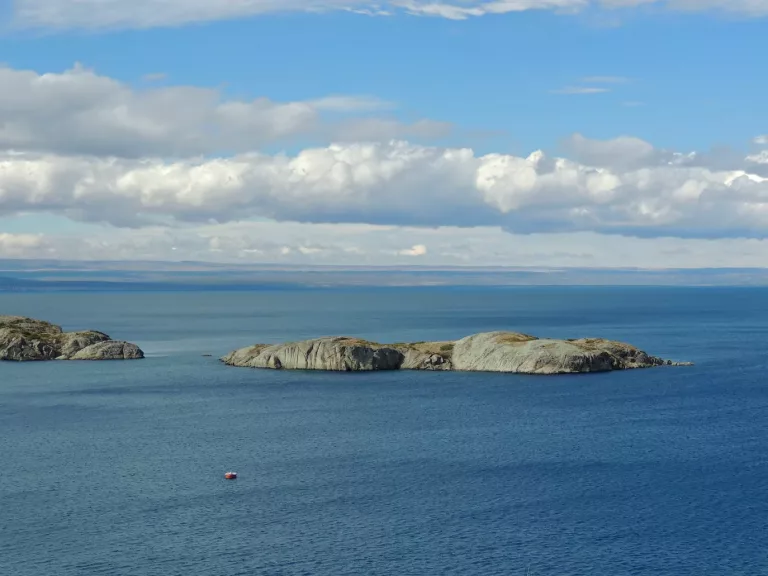
Full Day Peninsula Valdés with navigation
On this full day tour, you will be able to learn about many of the attractions and species that inhabit this peninsula.
